Recommended Books
Grades 3-5 – Japan
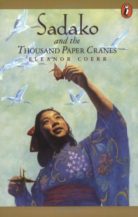
Sadako and the 1000 Paper Cranes
Hiroshima-born Sadako is lively and athletic–the star of her school’s running team. And then the dizzy spells start. Soon gravely ill with leukemia, the “atom bomb disease,” Sadako faces her future with spirit and bravery. Recalling a Japanese legend, Sadako sets to work folding paper cranes. For the legend holds that if a sick person folds one thousand cranes, the gods will grant her wish and make her healthy again. Based on a true story, Sadako and the Thousand Paper Cranes celebrates the extraordinary courage that made one young woman a heroine in Japan.
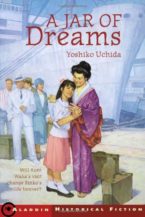
A Jar of Dreams
Eleven-year-old Rinko grows up in a closely-knit Japanese American family in California during the Depression, a time of great prejudice.
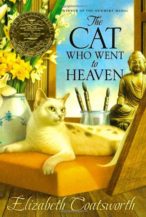
The Cat Who Went to Heaven
In ancient Japan, a struggling artist is angered when his housekeeper brings home a tiny white cat he can barely afford to feed. But when the village’s head priest commissions a painting of the Buddha for a healthy sum, the artist softens toward the animal he believes has brought him luck.
According to legend, the proud and haughty cat was denied the Buddha’s blessing for refusing to accept his teachings and pay him homage. So when the artist, moved by compassion for his pet, includes the cat in his painting, the priest rejects the work and decrees that it must be destroyed. It seems the artist’s life is ruined as well — until he is rewarded for his act of love by a Buddhist miracle.
This timeless fable has been a classic since its first publication in 1930, and this beautifully reillustrated edition brings the magic and wonder of the tale to a new generation of readers.
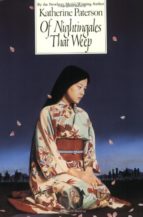
Of Nightingales That Weep
The daughter of a samurai never weeps. But Takiko, whose warrior father was killed in battle, finds this a hard rule, especially when her mother remarries a strange and ugly country potter. To get away from her miserable home, Takiko eagerly accepts a position at the imperial Japanese court. There, her beauty and nightingale voice captivate the handsome young warrior, Hideo — who also turns out to be an enemy spy. As war breaks out, Takiko flees the court and is forced to choose between loyalty to her people and her love for Hideo. She painfully learns that whatever choice she makes, she cannot run away from her samurai honor.
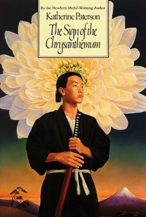
The Sign of the Chrysanthemum (Harper Trophy Book)
Muna has never known his father — a samurai, a noble warrior. But Muna’s mother has told Muna how he will know him one day: by the sign of the chrysanthemum. When his mother dies, Muna travels to the capital of twelfth-century Japan, a bewildering city on the verge of revolution. He finds a haven there, as servant to the great swordsmith, Fukuji. But Muna cannot forget his dream: He must find his father. Only then will he have power and a name to be reckoned with. Only then will he become a man.
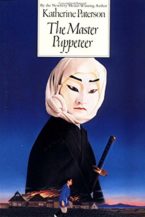
The Master Puppeteer
Who is the man called Sabura, the mysterious bandit who robs the rich and helps the poor? And what is his connection with Yosida, the harsh and ill- tempered master of feudal Japan’s most famous puppet theater? Young Jiro, an apprentice to Yosida, is determined to find out, even at risk to his own life.
Meamwhile, Jiro devotes himself to learning puppetry. Kinshi, the puppet master’s son, tutors him. When his sheltered life at the theater is shattered by mobs of hungry, rioting peasants, Jiro becomes aware of responsibilities greater that his craft. As he schemes to help his friend Kinshi and to find his own parent, Jiro stumbles onto a dangerous and powerful secret….
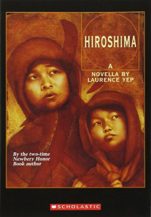
Hiroshima (Apple Paperbacks)
Based on real accounts by Hiroshima survivors, the fictional story of twelve-year-old Sachi follows her witness to the devastation in her city as a result of the bombing and describes her healing process as she helps to rebuild her home. Reprint.
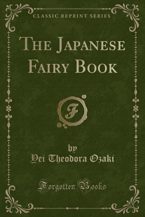
The Japanese Fairy Book (Classic Reprint)
Excerpt from The Japanese Fairy Book
Tms collection of Japanese fairy tales is the outcome of a suggestion made to me indirectly through a friend by Mr. Andrew Lang. They have been translated from the modern version written by Sadanami Sanjin. These stories are not literal translations, and though the Japanese story and all quaint Japanese expressions have been faithfully preserved, they have been told more with the view to interest young readers of the West than the technical student of folk-lore.
About the Publisher
Forgotten Books publishes hundreds of thousands of rare and classic books. Find more at www.forgottenbooks.com
This book is a reproduction of an important historical work. Forgotten Books uses state-of-the-art technology to digitally reconstruct the work, preserving the original format whilst repairing imperfections present in the aged copy. In rare cases, an imperfection in the original, such as a blemish or missing page, may be replicated in our edition. We do, however, repair the vast majority of imperfections successfully; any imperfections that remain are intentionally left to preserve the state of such historical works.
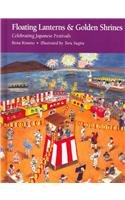
Floating Lanterns and Golden Shrines: Celebrating Japanese Festivals
Describes a year of special celebrations in Japan, with historical and cultural information, including recipes, crafts, and legends.
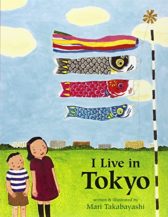
I Live in Tokyo
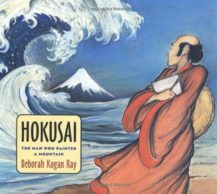
Hokusai: The Man Who Painted a Mountain
A tribute to an artist unafraid to break with tradition.
In her own glowing paintings and lucid text, Deborah Kogan Ray tells the fascinating life story of the Japanese artist Hokusai (1760-1849). He rose from poverty, taught himself to draw, became the promising pupil of a great master, and then defied tradition to become one of the most important and influential artists in the world.
Ray’s paintings are rich with period and biographical detail. The endpapers show drawings from Hokusai’s sketchbooks. Also included is one of his famous Thirty-six Views of Mount Fuji.
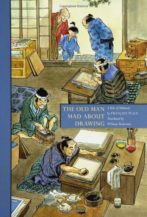
The Old Man Mad About Drawing: A Tale of Hokusai
In 1993, François Place’s The Last Giants was universally acclaimed a work of great, if heartbreaking, originality. In this recent effort, he brings to life the immortal Japanese illustrator and printmaker Hokusai. And just as he made real the “land of the giants,” so he brings the reader into the swirling and vibrant world of Tokyo. Trained early as an engraver, Hokusai studied under the master Sunsho, producing illustrated volumes of verse. His first manga volume followed in 1814, after he abandoned the traditional style of engraving to perfect the technique of the colored woodcut, in what many consider his greatest work, The 36 Views of Mt Fuji. His life was unsettled, his marriages uncertain, and his business affairs irregular, but his energy was boundless. He left for posterity thousands of sketches and drawings, illustrated books and prints, saying just before he died in 1889 “If heaven gives me ten more years (or even an extension of five), I shall certainly become a true artist.”
The exuberance of his life is marvelously conveyed in Place’s tribute to an artist who clearly ranks among his heroes. Both have the same genius for draughtsmanship, the perfectly defined, energetic stroke, the subtle wash. We see the humor and pathos of Hokusai’s life, recorded through the eyes of a young apprentice. This is a lovely book by an artist and writer we consider among the very best of his generation.
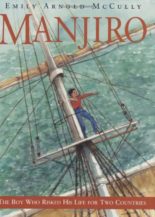
Manjiro: The Boy Who Risked His Life for Two Countries
In 1841, Japan had been closed to the outside world for 250 years, and anyone who tried to return to the country after leaving it could be executed. So when the small fishing boat on which fourteen-year-old Manjiro was working was shipwrecked, he despaired of ever returning to his village. The captain of the American whaling ship that rescued Manjiro took a special interest in him, inviting him to come live in Massachusetts. There, Manjiro was treated like Captain Whitfield’s son, and he began to feel as though Massachusetts was his second home. Still, he never gave up his dream of finding a way to return to Japan and see his mother again.
Watercolor illustrations bring to life the true story of a determined and resourceful young man whose intimate knowledge of two cultures later led him to play an important role in the opening of Japan to Western trade and ideas.
Manjiro is a 2009 Bank Street – Best Children’s Book of the Year.
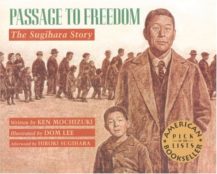
Passage to Freedom: The Sugihara Story (Rise and Shine)
A portrait of Chiune Sugihara, a Japanese diplomat in Lithuania in 1940, explains how he used his powers–against the orders of his own government–to assist thousands of Jews escape the Holocaust, actions that resulted in the imprisonment and disgrace of his entire family.”
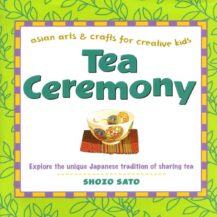
Tea Ceremony: Asian Arts and Crafts for Creative Kids
Explore one of Japan’s most beautiful traditions while entertaining your family and friends!
Tea Ceremony: Explore the unique Japanese tradition of sharing tea is an exciting and fun way to introduce Asian culture to kids. Readers will learn all the steps for performing a Traditional Japanese Tea Ceremony.
With this book kids will be able to:
- Perform the Traditional Japanese Tea Ceremony at home through easy-to-follow instructions
- Explore all the elements of an authentic Japanese tea ceremony, including the tea utensils such as the scoop, whisk, bowl, and
- fukasa (silk cloth used for cleaning utensils)
- Know the proper technique for whipping tea, and the different kinds of tea used
The Asian Arts & Crafts for Creative Kids series is the first series, aimed at readers ages 7-12, that provides a fun and educational introduction to Asian culture and art. Through hands-on projects, readers will explore each art—engaging in activities to gain a better understanding of each form.
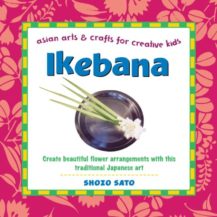
Ikebana: Asian Arts and Crafts for Creative Kids
This is the fourth book in the Asian Arts and Crafts for Creative Kids series, and introduces kids to the fascinating art of Japanese flower arranging. Kids will learn all the steps for creating beautiful, unique, and creative flower arrangements with a few simple materials.
This book explores all the elements of authentic Japanese ikebana, including the specific techniques and plants used, the moribana style using a kenzan (spiked base), the nageire style, and arrangements in everyday containers.
The Asian Arts & Crafts for Creative Kids series is the first series aimed at readers ages 7 – 12 that provides a fun and educational introduction to Asian culture and art. Readers can explore new crafts through hands-on projects that are both fun, and will give them a greater appreciation of Asian culture.
Ikebana Activities introduces kids to the fascinating art of Japanese flower arranging. Kids will learn:
- All the steps for creating beautiful, unique, and creative flower arrangements with a few simple materials
- Explores all the elements of authentic Japanese ikebana, including the specific techniques and plants used, the moribana style using a kenzan (spiked base), the nageire style, and arrangements in everyday containers
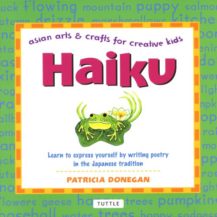
Haiku: Asian Arts and Crafts for Creative Kids
In this multicultural children’s book, readers will learn to create haiku—elegant and simple Japanese poems.
Haiku uses images from nature to make a statement or capture a moment. Haiku are short, but powerful expressions—making them easy and fun to write and share with your friends.
The activities in this book will show the seven keys to creating your own haiku and will help you to get started, think up memorable words and images, and write the three short lines that make up a great haiku. With clear expressions and many examples, this is a great way to have fun while you explore the fascinating aspect of Japanese culture.
Kids will learn to write:
- Their first haiku
- Haiku about nature
- Haibun—haiku with a short story
- Haiga—haiku with a drawing
- Renga—haiku written to friends.
About the Series:
The Asian Arts & Crafts for Creative Kids series is the first series, aimed at readers ages 7-12, that provides a fun and educational introduction to Asian culture and art. Through hands-on projects, readers will explore each art—engaging in activities to gain a better understanding of each form.
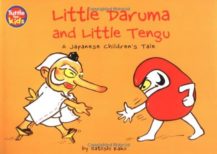
Little Daruma & Little Tengu: A Japanese Children's Tale
Little Daruma wants to be just like Little Tengu, from his fan right down to his shoes, but Little Daruma becomes envious of Little Tengu’s nose, something that is not so easy to make.
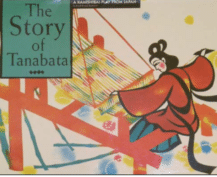
The Story of Tanabata
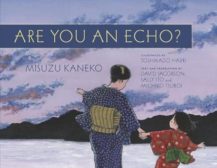
Are You an Echo?: The Lost Poetry of Misuzu Kaneko
In early-1900s Japan, Misuzu Kaneko grows from precocious bookworm to instantly-beloved children’s poet. But her life ends prematurely, and Misuzu’s work is forgotten. Decades later her poems are rediscoveredjust in time to touch a new generation devastated by the tsunami of 2011. This picture book features Misuzu’s life story plus a trove of her poetry in English and the original Japanese.
Big Catch:
At sunrise, glorious sunrise
it’s a big catch!
A big catch of sardines!
On the beach, it’s like a festival
but in the sea, they will hold funerals
for the tens of thousands dead.
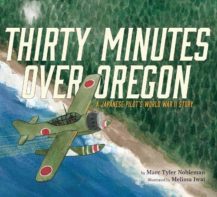
Thirty Minutes Over Oregon: A Japanese Pilot's World War II Story
An Orbis Pictus Honor Book for Outstanding Nonfiction 2019In this important and moving true story of reconciliation after war, beautifully illustrated in watercolor, a Japanese pilot bombs the continental U.S. during WWII—the only enemy ever to do so—and comes back 20 years later to apologize.
The devastating attack on Pearl Harbor, Hawaii, drew the United States into World War II in 1941. But few are aware that several months later, the Japanese pilot Nobuo Fujita dropped bombs in the woods outside a small town in coastal Oregon. This is the story of those bombings, and what came after, when Fujita returned to Oregon twenty years later, this time to apologize.
This remarkable true story, beautifully illustrated in watercolor, is an important and moving account of reconciliation after war.

No Steps Behind: Beate Sirota Gordon’s Battle for Women’s Rights in Japan
“Her parents moved her from Austria to Tokyo, Japan before she started school. They were all rendered stateless when Nazi Germany and Austria stripped Jews of their citizenship. She graduated high school fluent in Japanese plus four other languages and went to college in America at age 15. Cut off from her parents by the Japanese attack on Pearl Harbor, and America’s entry into World War II, she went years not knowing if they were alive. She returned to post-war Japan as an interpreter, found her parents, and wrote the fateful words that make her a storied feminist hero in that nation even today. As Justice Sonia Sotomayor said about Beate Sirota Gordon, ‘It is a rare life treat for a Supreme Court Justice to get to meet a framer of a Constitution. It is rarer indeed for that framer to have been a woman'”–

A Bowl Full of Peace: A True Story
“Six-year-old Sachiko and her family suffered greatly after the atomic bombing of Nagasaki, and in the years that followed, the miraculous survival of a ceramic bowl became a key part of Sachiko’s journey toward peace”–
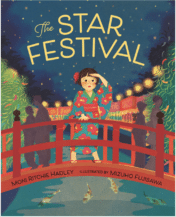
The Star Festival
Tanabata Matsuri, the Star Festival, celebrates a popular folktale: The Emperor of the Heavens separates his daughter, Orihime, from her love, Hikoboshi, all year—but on this day the two stars finally reunite, crossing a bridge over the Milky Way. For Keiko, her mama, and her grandmother, Tanabata is about making tanzaku wishes, taking in the colorful decorations, and eating delicious food like nagashi somen and shaved ice. But when Obaasan gets lost in the crowd, Keiko and Mama must make their own bridge to find her again—and see if their tanzaku comes true.
